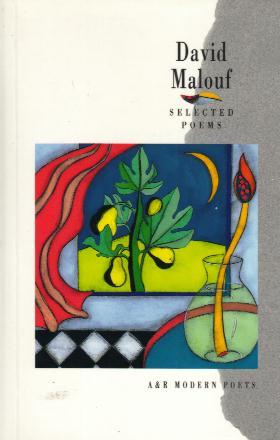
Selected Poems by David Malouf, 1991
Cover illustration by Louise Tuckwell
Angus & Robertson edition 1992

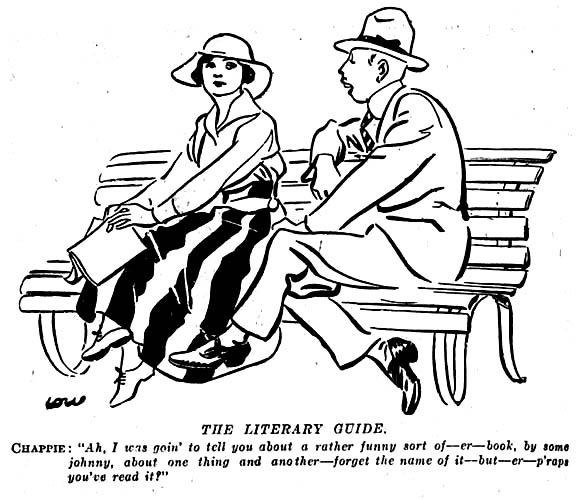
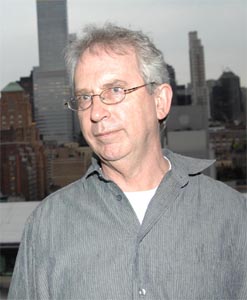 |
As Peter Carey's new novel, The Chemisty of Tears, hits the bookshelves, he is interviewed in "The Age" by Simon Mann: |
These days, anything written about Carey inevitably carries the label ''dual Booker winner'', noting the fact he is almost alone in twice winning Britain's top literary accolade, for Oscar and Lucinda in 1988 and True History of the Kelly Gang in 2001. They and his load of other trophies might add uncomfortably to the weight of expectation success brings. But Carey says he is only aware of the self-imposed pressure, that doing what he does always ''feels risky and difficult''.
''Writers, at least writers of fiction, are always full of anxiety and worry,'' he says. ''It's never any different, because in the end what you do is make the difficulty for yourself, which is the novel.''
Reflecting further, he adds: ''The real anguish is just making the thing and then, after that, well, it's awful to be criticised and it's awful to be not liked, it's awful to be any of those things. Basically, the writer of fiction is the person who comes in every day and puts his head up his bum and goes to work.''
It is on record that once, when in England, William Morris Hughes was asked what the Australian climate was like. "First tell me," he rapped out, "what the climate of Europe is like!" Put the Australian landscape in place of its climate, or beside it, and you have the case for a poet or artist who has to deal with its extraordinary varied problems. What is the Australian landscape? Is it that of Tambo or Ballarat or the Blue Mountains or Broome? As well ask if the European landscape is that of Brittany or Spain! When a poet, therefore, is known as an interpreter of our landscape, we may well ask, "Which landscape?'" and be glad to hear that he has confined his aims, to the treatment of one region. That is task enough and to spare. Henry Kendall was the first and most eager of our definite landscape painters in words, and it is important to remember, as Mr. A. G. Stephens points out in a recent critical review of this poet's work, that what he absorbed was "the natural spirit of the southeast coast of Australia, between the mountains and the sea." Kendall knew that country in New South Wales especially, but all his descriptive work would be at home in the same kind of seaboard country in Southern Queensland -- what is known as the South Coast and the North Coast. (This naming seems to me unfortunate as it is in New South Wales, too.) When I told people that I lived on the North Coast in Queensland, they began looking at the map near Cape York! At the same time it is droll to hear Queenslanders speaking of the "Northern Rivers," just south of the Queensland border).
Kendall's Bush.
For the moment I do not intend to look at Kendall primarily as a poet, quoting his work that was highest as poetry. What I want to follow is his skill in rendering a landscape that was his to interpret for the first time. Before him, Harpur had done some astonishing and vigorous work, but the field was hardly touched by him. Enter Kendall, born at Ulladulla, in the timbered ridges, a dozen miles from the sea; he was taken later to the watered district of the Orara and the Clarence Rivers. He knew the harshness of the timber-getters' lives and the realities of sheep farming; but the whole scene was for him impregnated with beauty. His first boyish poems evoked a scene that was full of waterfalls, fern gullies, birdsong, and brilliance, brilliance without harshness. This is from "Morning in the Bush":
Amongst the gnarly apple-trees, a gorgeous tribe of parrots cameSo Kendall wrote in his youth, full of zest and enthusiasm and a straightness of purpose. It is pleasant, too, to see the length of those lines, which happened to suit the purpose of this poem. He had evidently never heard of payment by the line, a habit which causes so many verse-makers to split each line down the middle, so as to make it two! Just try splitting the lines in this poem, and printing each one as two, and see how the whole verse thuds and thumps along. In quoting these particularly vibrant lines I have hardly suggested the most characteristic Kendall, the Kendall who wrote in lyrical metres of bellbirds and mountain dells, and who used the sweetest and most liquid of the native names to make refrains for his songs. I use the expression "mountain dells," not that it is the best for our landscape, since the word "gully," with its association of depth and contrast, has replaced it in Australia; I use it because Kendall used words like "grove" and "glen," and "dell" so often. His tools, after all, were those of another country. The marvel was that with them he shaped a landscape that we can all recognise. I am not sure that Kendall even used the word "bush" as we do when we say "the bush." Yet it is an old enough word. You'll perhaps remember that it was used by no less a talker than Mrs. Nickleby herself when she once became reminiscent about one of her early admirers: "And he went to Australia and got lost in a bush with some sheep. I don't know how they got there. . .-"So Dickens knew of "the bush" since he allows his Mrs. Malaprop-Nickleby to trip over it. But if Kendall does not master the use of indigenous words and terms so as to drench them with poetry and draw them into his singing lines, he has, after all, mastered the landscape itself:
And lucid colours born of woodland light,Those lines he wrote, in a famous sonnet of despair, using them to name the themes that he had once hoped to render. But the lines are more than names, they are a poem in themselves; such a poem, to be impressive, need not be long.
In small proportions we just beauties see.
Our Own Poet.
Poetry does two things for us. It brings beauty to us from everywhere, from Xanadu, Cathay, Avalon, from the skies: it also brings us to beauty, showing us what is in the life around us. Just now I was reading another sonnet of Kendall's, and its simple words seemed as if spoken by some one with a poet's heart, beating anywhere, let us say, between Noosa and the Tweed. Here it is:--
Sometimes, we feel so spent for want of rest,There are indeed such secret glens in our coastal ranges for those who will take time to seek them out. Their lovers will say their names over, beginning, maybe, with Bon Accord Falls, that place of superb contrasts -- dizzy heights, and finest ferny detail; delicate birdsong, and the soaring of a wedge-tail eagle over the gorge. But each of us can find different names for the secret glens, or remember others that are nameless. In doing this we have touched the very sources of Kendall's poetry.
First published in The Brisbane Courier, 13 October 1928
[Thanks to the National Library of Australia's newspaper digitisation project for this piece.]
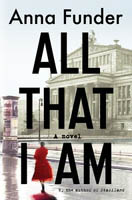 |
All That I Am Anna Funder Penguin 2011 |
The gripping first novel by Anna Funder, the acclaimed author of Stasiland, based on a true story. All That I Am, is moving and beautifully written, equal parts a love story, thriller and testament to individual heroism. It evokes books like Irene Nemirovsky's Suite Francaise, Bernard Schlink's The Reader and William Boyd's Restless - intelligent, powerful novels that appeal to a wide audience.
'When Hitler came to power I was in the bath. The wireless in the living room was turned up loud, but all that drifted down to me were waves of happy cheering, like a football match. It was Monday afternoon . . . '
Ruth Becker, defiant and cantankerous, is living out her days in the eastern suburbs of Sydney. She has made an uneasy peace with the ghosts of her past - and a part of history that has been all but forgotten.
Another lifetime away, it's 1939 and the world is going to war. Ernst Toller, self-doubting revolutionary and poet, sits in a New York hotel room settling up the account of his life.
When Toller's story arrives on Ruth's doorstep their shared past slips under her defences, and she's right back among them - those friends who predicted the brutality of the Nazis and gave everything they had to stop them. Those who were tested - and in some cases found wanting - in the face of hatred, of art, of love, and of history.
Based on real people and events, All That I Am is a masterful and exhilarating exploration of bravery and betrayal, of the risks and sacrifices some people make for their beliefs, and of heroism hidden in the most unexpected places. Anna Funder confirms her place as one of our finest writers with this gripping, compassionate, inspiring first novel.
Reviews
Rachel Cusk in "The Guardian": "Anna Funder's first book, Stasiland, was a work of great originality and interest. An account of life in the former German Democratic Republic, it sought to delineate individual and national states of being in the wake of the trauma of totalitarianism, and particularly to inquire into the mental state of a society that has suffered an absolute loss of faith in personal morality...There will, of course, be many readers for whom a remarkable story told with clarity and precision, along with the moments of insight and literary grace that couldn't not occur in Funder's writing, will be a very welcome pleasure."
Joanna Kavenna in "The Observer": "Funder's prose is clear, easy to read, scrupulously lacking in stylistic idiosyncrasies...Clever, intriguing, incoherent, All That I Am is cinematographic pseudo-realism, a studiously researched fantasy about the past that stages an almost self-annihilating debate about reconstruction."
Rachel Hore in "The Independent": "The Australian writer Anna Funder follows her Samuel Johnson Prize-winning Stasiland with a novel challenging the frontiers between historical fact and the creative imagination...Funder became a friend of the real-life Ruth Wesemann in Ruth's later years in Sydney, and her notes on sources indicate how closely she's tried to base the novel on what is known. At the same time, the book is far more than "faction"; she has successfully transformed the material into a narrative of individual endeavour and survival, that examines universal human themes."
David Marr in "The Monthly": "Though set in an earlier time and in a different struggle, All That I Am takes us back to the territory of Stasiland (2003), Funder's brilliantly successful account of the turncoat regime of East Germany. In both books - one fact and one a kind of fiction - moral strength is her core concern: the strength it takes to refuse to fall in with an evil and apparently triumphant regime. She knows how little it takes to fail. Being wanted, being useful, can be temptation enough...Funder's prose has a clarity that's at times arresting. In language of admirable simplicity she explores the shadowy ambiguities lurking in her characters - ambiguities that have always fascinated her: the good that comes with bad and the bad with good."
David Sornig in "The Adelaide Review": "Between Stasiland and All That I Am Funder asks an important question about how we tell stories of other people's moral courage: how can an author properly navigate the line between invention and truth? The famously cool reception of Stasiland in Germany, particularly in East Germany, revealed some anxiety about Funder's own answer...In All That I Am, Funder achieves the right balance between truth and invention to pay tribute to those people who tried to get the message out about what shape the future would take under Hitler. That their warnings were ignored for so long was a tragedy, one that we ignore at our own peril. Funder reminds us of this truth with certainty and moral force."
Interviews
Anna Funder in conversation on Slow TV.
Catherine Kennan in "The Sydney Morning Herald".
Jonathan Derbyshire in "New Statesman".
Ridhcard Fidler on ABC Radio [audio].
Other
Anna Funder discusses the novel on Youtube.
The first half century of Australian history produced little creative artistic work. Wentworth, when he was at Cambridge, wrote a very fine poem, in which he sounded a note of Australia's future greatness, and predicted the rise of some "Austral Shakespeare, whose living page, to nature true, may charm in every age." That poem, however, beautifully correct as it may be, lacked any emotional impulse. The first really genuine poetic piping was heard in 1845, when Charles Harpur, a native of Goulburn, the city that has just celebrated its centenary, wrote a little book of sonnets. The sixties saw the rise of Gordon and Kendall. They were two poetic stars that burst out of the literary darkness about the same time, the one in Victoria and the other in New South Wales. Brilliant as Gordon was, revealing the influence of both Swinburne and Browning, he was not so musical as Kendall, and not so subtle and humorous as Brunton Stephens, who, like the rich and delicate Essex Evans, belongs to a later period. Henry Kendall is probably the most musical of Australia's poets. It is nearly sixty years since he began to sing his brave woodland notes. His poem "To a Mountain" is Australia's masterpiece. No other Australian poet has reached the towering heights of arcadian grandeur that Kendall trod, nor has any other poet touched our woodland scenery with the same exquisite colouring. He wrote in an age, however, when Australia had little inclination for art, and he felt the hardships occasioned by a small and always insecure income until in his later years the late Sir Henry Parkes, one of his first admirers, secured for him a position in the Government service which was both congenial and remunerative. Unfortunately Kendall did not long enjoy his ease, falling a victim to consumption in the year I882, at the age of 41 years. At different times Kendall's poems have been published in different sections in different volumes, but these have now been gathered into one very fine edition, entitled "The Poems of Henry Kendall" (Angus and Robertson, Ltd., Sydney), to which Mr. Bertram Stevens has contributed a short biographical note. The new volume contains the poems included in the three volumes published during Kendall's lifetime, those not reprinted by Kendall, but included in a collected edition of 1886, and a number of poems now printed for the first time, having been secured from the Kendall manuscripts in the Mitchell Library. The new volume contains nearly 400 pages, and although all the poems are not of the same high standard yet Kendall mostly wrote with the inspiration of the true artist, and his best pieces will certainly have an enduring place wherever English poetry is read. Our copy is through Mr. J. H. Thomson, Queen-street.
First published in The Queenslander, 6 November 1920
[Thanks to the National Library of Australia's newspaper digitisation project for this piece.]
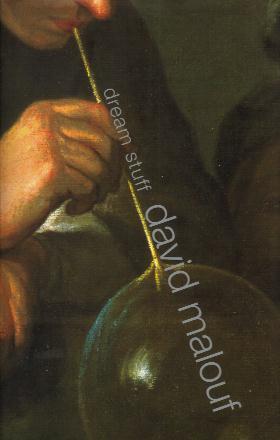
In 2011, in not a single course in the whole country were students asked to read Henry Handel Richardson's The Fortunes of Richard Mahony. This is the equivalent of not one Russian university teaching Anna Karenina, of Madame Bovary going untaught in France. It is a rampageous scandal, to borrow a coinage from HHR herself. If I tell you that Patrick White's The Tree of Man was prescribed on two courses last year, or The Man Who Loved Children, which MUP recently put back into print, on just one, you start to see the extent of the problem.
Text will begin publishing the classics in May at $12.95 a pop. You can find the list of the first 32 scheduled for release in their latest catalog.Such educational poverty is consistent with the views expressed in 1935 by G. H. Cowling, professor of English literature at Melbourne University, who told readers of The Age that: ''The rewards of literature in Australia are not good enough to make it attract the best minds ... Good Australian novels which are entirely Australian are bound to be few ... Australian life is too lacking in tradition, and too confused, to make many first class novels.''
The number of Australian women writers is no less remarkable than their virility. With the possible exception of Ethel Turner (Mrs. H. Curlewis), who has not published a book for some time, most of those who were writing well twenty and more than twenty years ago are producing good work still -- Mary Gilmore, Stella Miles Franklin, Louise Mack, Mrs. Ada Holman, Dora Wilcox; and of a younger generation of writers, Dulcie Deamer, Vera Dwyer, Ella McFadyen, Nina Murdoch, and Katherine Susannah Prichard, to mention a mere handful.
Many of them began to write as children. At sixteen, Dulcie Deamer leapt into fame by winning a prize for a short story competition. Her novels, historical (not Australian), have been serialised by the Hurst Syndicate, and she, too, continues to write as well as ever; in the case of her verse, with gradual improvement. Katherine Susannah Prichard was born in Fiji, educated along with Elsie Cole and other women writers when young, at South Melbourne College where poet Bernard O'Hara taught her. She won Hodder and Stoughton's prize for a novel, "The Pioneers," in 1915, and her work his steadily increased in power since "Coonardoo," which won the first "Bulletin" novel competition with "A House is Built," is, possibly, her finest piece of work.
Vera Dwyer, a protegee of Ethel Turner, as are Ruby Doyle and other Australian women writers, was a remarkable child writer. In a recent novel, "In Pursuit of Patrick," despite immature passages in it, she proved that she can write a successful adult story. Hitherto her work was mainly for children.
SUCCESS ABROAD.
Many Australian women, who started well at home, have done even better abroad -- Helen Simpson and Alice Grant Rosman, for instance, Dorothy Cottrell, one of Mary Gilmore's several "discoveries" -- (Daniel Hamlyn, a winner in the second "Bulletin" novel competition and a promising woman writer-is another), wrote her successful novels 'Singing Gold" and "Earth Battle" here. Colour is the chief characteristic of them, and her first attempt, "Singing Gold," is distinguished in this respect.
Other Australians have published abroad without leaving home. One of the most interesting of these is the daughter of Dowell O'Reilly, Eleanor Dark, who wrote originally as Patricia O'Rane. She is still very young, and though the wife of a busy doctor, manages to keep the torch of a little literary group burning brightly in Katoomba. Nina Lowe, an excellent short story writer, who during the war edited a cookery book for the Red Cross, which netted £500, is a member of the group. Mrs. Dark's last book, "Prelude to Christopher," was published here. Mary Kelaher, whose novels were first serialised in the "Woman's Mirror," and who almost might be termed a "dlscovery" of the late editor, Mr. Bert Toy, is station bred and has given us people of a life she knows. Another young writer, Georgia Rivers of Melbourne, has produced many novels. "The Difficult Art" (of a young girl growing up) is a most unusual book. Jessie Urquhart brought out her first book here many years ago, and is now publishing in London; but she will not, I think, do her best work until, like Alice Grant Rosman, she relinquishes journalism for fiction. Amongst new names, Mary Mitchell's stands out. She achieved a London success with "Warning to Wantons." But this book is not Australian and is of little importance to us here. She could write, I imagine, a good Australian society novel, for which there is a waiting public.
LITERARY COMPETITIONS.
Recent literary competitions have revealed some new women writers, chief of these being Velia Ercole, Marjorie Barnard and Flora Eldershaw, the latter joint authoresses of "A House is Built."
Henry Handel Richardson was introduced to Australlans by Nettie Palmer, herself an able essayist and critic. Born in Melbourne, the daughter of an English doctor, and educated at the Presbyterian Ladies' College there, Henry Handel Richardson went to London, when she was eighteen, to study music. She took up fiction writing instead and for years worked and published practically unnoticed save by her own contemporaries, few of whom, in the realm of fiction, have equalled her in style and form of production. Fame came with her last book, "Ultima Thule." This is by far her best effort, lucid and sincere. It completes a trilogy of books dealing with the fortunes or rather misfortunes of Richard Mahoney, a doctor who did not like being a doctor. There are faults to be found from an Australian point of view with "Ultima Thule," the whole action of which takes place in Australia; but few in the presentation of it. The writer, unlike Galsworthy, who never rises above blood-heat, allows each of her characters their own temperature. Many may, however, question the worth of such details of a failure's life. But the writer is not at home outside tragedy. "The Getting of Wisdom," a look for girls, fails to awaken interest.
ETHEL TURNER.
Because of the influence of Ethel Turner, Australians have done well in the portrayal of children. Too much stress cannot be laid on the fact that Ethel Turner, from the moment she opened the door of an Australian house and showed the world what we were really like, has been a guiding star for the best. She has not been able to give us adults as real as her children, but the germ is there. Born in England, Ethel Turner came as a child to Australia and was educated with her sister, Lilian and Louise, and Amy Mack, at the Sydney Girls' High School. She was very young when "Seven Little Australians" first appeared. The children in this book are, in their way, as immortal as "Alice," and it is only some inferiority complex of Australians that has not recognised it, nor realised how much more real the children of "The House of Misrule" are than Anne of Green Gables. Many women have followed Ethel Turner -- Mary Grant Bruce, Constance Macanass, Elizabeth Powell, a younger writer, May Gibbs found a little fairy world all her own. Of late years, Dorothy Wall has achieved some recognition.
A number of imaginative women writers are immersed in journalism. Myra Morris, Nora Kelly, Margaret Fane, E. M. England, Lyn Lucas, a relative of E. V. Lucas, D. L. Waraker, being a few. The two latter have produced good one-act plays. Miss Lucas, a Brisbane writer, won Carrie Tennant's play competition. It would be unfair in a survey of women writers not to mention Miss Tennant's name, for, while she conducted her little theatre, she did a good deal to encourage Australian playwrights. Doris Egerton Jones and Dorothy Tobin have done creditable work in longer plays.
Our women writers have no mean sense of humour when they like, though it cannot be termed a strong feature of their work. Winifred Birkett, a younger writer, who has published a couple of books, has developed this side pleasingly; and so, too, has Mary E. Lloyd, whose humorous work was praised by that discerning critic, the late A. G. Stephens. "Three Goats on a Bender" Miss Birkett named her humorous story; Miss Lloyd, "Susan's Little Sins."
All of our women writers are well read, none very keen about sport, though golf and tennis and sometimes dancing play a part in their leisure moments. All are earnest, sincere workers.
I have left Mary Gilmore, whose hobby might well be "the finding of new writers," to the last. She holds a unique place both in our hearts and our literature. For years through helping others, young and old, she delayed publication of her reminiscences, "Old Days Old Ways," an important contribution to our literature now delighting everyone. Her poetry will mean more to posterity than her prose, I think. She has published several volumes, the subjects ranging over a wide field, from charming little lyrics to lovely lullabies.
There are many others, who might well have been noticed, but all of these mentioned have published books either abroad or at home, and not one but will repay the reader's perusal.
Our women aim at truth in writing just as the men do; and this is characteristically Australian. We do not need to read Russian literature to inspire us to realism. Our country, born of suffering and hardship, has shaped our character, and out of it is coming a literature entirely different from any other. Women are doing their share in the building up of this national literature just as they did their share towards the making and shaping of the nation itself.
First published in The Sydney Morning Herald, 4 April 1935
[Thanks to the National Library of Australia's newspaper digitisation project for this piece.]
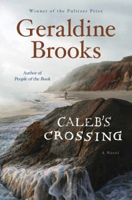 |
Caleb's Crossing Geraldine Brooks HarperCollins 2011 |
In 1665, a young man from Martha′s Vineyard became the first Native American to graduate from Harvard College. From the few facts that survive of his extraordinary life, Geraldine Brooks creates a luminous tale of love and faith, magic and adventure.
When Bethia Mayfield, a spirited twelve-year-old living in the rigid confines of an English Puritan settlement - and the daughter of a Calvinist minister - meets Caleb, the young son of a Wampanoag chieftain, the two forge a secret friendship that draws each into the alien world of the other.
As Bethia′s father feels called to convert the Wampanoag to his own strict faith, he awakens the wrath of the medicine men. Caleb becomes a prize in a contest between old ways and new, eventually taking his place at Harvard, studying Latin and Greek alongside the sons of the colonial elite.
Fighting for a voice in a society that requires her silence, Bethia becomes entangled in Caleb′s struggle to navigate the intellectual and cultural shoals that divide their two cultures.
Once again, Pulitzer Prize-winning novelist Geraldine Brooks brings to vivid life a shard of little-known history, and through Bethia and Caleb explores the intimate spaces of the human heart.
Reviews
Jane Smiley in "The New York Times": "Geraldine Brooks's new novel, Caleb's Crossing, her fourth in a decade, is a short and seemingly modest historical work -- no kings, no famous events -- told by an equally modest narrator who does not go on to become acquainted with, say, the infant Benjamin Franklin...In Caleb's Crossing, Brooks returns to the time period and some of the issues she explored in Year of Wonders, a novel that takes place in a 17th-century English town ravaged by the plague, told in the first person by a young servant girl. The setting of this new novel is, however, not an earthly hell but a version of paradise, fertile and beautiful...Caleb's Crossing could not be more enlightening and involving. Beautifully written from beginning to end, it reconfirms Geraldine Brooks's reputation as one of our most supple and insightful novelists."
Kirsten Tranter in "The Monthly": "Caleb's Crossing extends Geraldine Brooks's interest in the early history of the United States, first explored in her Pulitzer Prize-winning March, which is set during the Civil War. Here, she writes about the seventeenth-century Puritan settlements in colonial Cambridge and on the island of Martha's Vineyard, where she now lives...Brooks's chief desire seems to be to inform - to set before the reader a carefully researched historical picture. In these terms, Caleb's Crossing succeeds."
Sarah Johnson on the "Reading the Past" blog: "As always, Brooks treads the dividing line between literary and popular fiction with confidence. Her work is strongly plotted, full of twists and surprises: life-changing disappointments, sudden opportunities, unexpected crossroads. The language is as fresh and crisp as the salt-tinged air, and her characters are, for the most part, ripened to their fullest potential. The one exception is Caleb himself. We get to know his personality and mettle, but he is kept at a distance. There are times - fortunately rare - when he reads more as symbol than flesh and blood. "
Mark Rubbo of "Readings" bookshops: "Geraldine Brooks's great skill is taking small historical moments and writing them large, using them to create a bigger picture. In 1665, a young man became the first Native American to graduate from Harvard College. Very little is known about this man and so Brooks has created a life and world for him: Caleb...Brooks tackles big issues in this book and gives them a universality that is not confined to the period it covers. Among them are the issues of women's rights, conflict between cultures, affirmative action and the nature of god and religion. Big stuff, but Brooks does it through the telling of a fascinating and rich story."
Alan Cheuse in "The Chicago Tribune": "A gift for creating a certain kind of novel can sometimes become as much a liability as a joy when that gift makes for great success in the writer's career. Fortunately for readers Pulitzer-Prize winning novelist Geraldine Brooks seems to love writing historical fiction as much as her fans love to read it. She follows her splendidly engaging novel People of the Book with a new novel, this one set on Martha's Vineyard in the late Seventeenth-Century...I admired this novel a great deal, especially the way that Brooks turned her extensive research, of which she speaks in a five page Afterward, into an easefully conducted narrative."
Interviews
Stephen Romei in "The Australian"
John Purcell on the "Booktopia Blog"
Ramona Kaval on ABC Radio National's "The Book Show".
Other
YouTube book trailer:
Those who read '"Seven Little Australians" and "The Family at Misrule," by Ethel Turner (Mrs. H. R. Curlewis) will be delighted with her latest book,"'Little Mother Meg." It is a sequel to the other two, and, if there are degrees of com- parison, is even more attractive than its predecessors. The pathos of the story is cleverly set off with fine touches of humour, and exquisite accounts, of the doings of the younger members of the House of Misrule. Meg's husband has lost his private income through the failure of a mine, and was obliged to throw up his position in the hospital owing to an affection of the eyes. He visits Heidelberg, where a specialist cures him, and returns, to work up a practise, with a debt of £600 to work off. His patients increase very slowly, and he and Meg have to practise all sorts of devices in the pursuit of economy, but their little baby boy sweetens the hard struggle against adverse circumstances. A turn in the wheel of fortune came when the doctor cured the daughter of a rich squatter from Queensland. The little girl had lost her reason some years before, owing to a fall from a horse. One day she wandered Into the paddocks at Misrule, and set fire to a heap of leaves. The fire caught her dress, and she was badly burnt. The shock seemed to undo the mischief which had, been caused by the fall from the horse, and, under the skilful care of Meg's husband, she is eventually restored to health, both in mind and body. The love affairs of Nellie, who is now some 18 years of age, make the romantic parts of the book, and are very naturally woven into the story. In the end she becomes engaged to Edward Twynam, a recent arrival from England. The story is delightfully told, and the characters are so life-like that one reaches the end with a sigh of regret, as for a departing friend. It is to be hoped that the author will soon add another sequel to the present series, which has delighted thousands of readers. The book is published by Messrs. Ward, Lock, and Company, and comes to us from Mr. E. W. Cole, Sydney and Melbourne.
First published in The Australian Town and Country Journal, 5 November 1902
[Thanks to the National Library of Australia's newspaper digitisation project for this piece.]
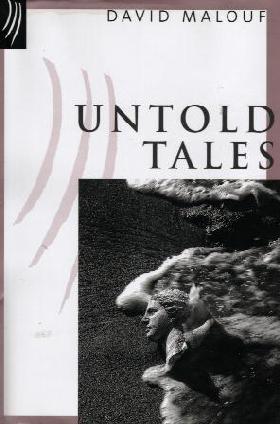
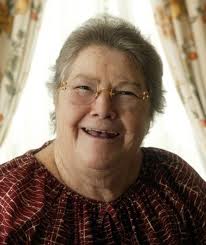 |
The Age newspaper is rather taken lately with the idea of interviewing someone over lunch. Its not a bad idea - it gets the subject a little more relaxed and you get the added bonus of covering the restaurant/cafe as well. Recently Jason Steger met up with Colleen McCullough in the Sofitel in the city. |
She has come to Melbourne for a day. Not from her home on Norfolk Island, where she lives in a house she bought more than 30 years ago on the proceeds of her rather successful second novel, The Thorn Birds. She's been in Sydney talking about her new book, Life without the Boring Bits, a sort of memoir cum collection of essays cum rant that is very Colleen. But she can't get back home for a while because there aren't many flights to her outpost in the Pacific.
Last time I saw her was in that home she shares with her husband, Ric Robinson, a Norfolk Island local. It was not long before she was due to have a major operation and, to be honest, I wondered whether I'd see her again. But here she is, I'm happy to say; a bit frailer but undaunted. She takes a lot of aspirin - ''a wonderful drug'' - and still loves a fag. And she still has her raucous laugh.
This volume is the legacy which Mr. Sladen has left behind him upon his departure for Europe. It may be accepted as a convincing proof of the sincerity of his attachment to Australia that he informs us in the preface that he makes no attempt "to pose as an Australian." Just now attention has been drawn in some of the leading English papers to Australian poetry, especially to Gordon's works. It is eminently desirable that no such opinion should gain ground as that the author of the little book before us is accepted as a satisfactory representative of the native Australian school of poetry. It was, we believe, Sydney Smith who first reviewed at home a volume of poems from this part of the world. That volume contained a couplet borrowed from Bishop Hall's account of himself --
I first adventure, follow me who list,
And be the second Austral harmonist.
Since then, in addition to a very few in Australia who have written good verses and two or three who have earned a reputation for poetic genius, poetasters and rhymesters, good, bad, and indifferent, have rushed into print. They have saturated magazines and newspapers with bad rhymes and halting measures. They have taken the pains to manifest in public their lack of thought and their ignorance of rhythm. They have had nothing to say, and they have said it in sentences, more or less ungrammatical, which, being printed in Iines with capital initial letters, they have styled poems. Sometimes the "verse" has been blank -- very blank, but in other cases doggerel has been the rule. It is hard to decide which of these forms of poetical insanity is the worse, but the former sometimes enjoys the advantage of being easily translated into common sense. Of all such offenders as we have been describing Mr. Sladen is perhaps the worst, as he may be reckoned the most conspicuous. One can excuse half-educated people who want to lisp in numbers, for it is a small matter to them that the numbers are wanting. They have not had the advantage of an intimate acquaintance with the great Greek or even the great English masters. It is simply through vanity or ignorance of their incapacity that they rush in where angels fear to tread. But what shall we say of a man who has had a University education, who comes from one of the most classical schools of English thought, who can muster a whole army of letters after his name, who has occupied a position on the professorial staff of a University, and who may for all these reasons be assumed to have some acquaintance with the best that is known and thought in the world-- what shall we say of him when, with but slight claim to the poetic gift and with no special message to speak, he pours out from an apparently inexhaustible treasury volume after volume of inane jingle which has neither the soul nor the semblance of poetry? Mr. Sladen has no excuse for inflicting so much trash upon a long-suffering public. Here and there may be found evidence that if he took sufficient trouble he might produce verses which could be read without causing mental and physical distress to the reader; but such indications are rare. Judged by the great mass of his compositions in the volume before us he may well be taken as the exemplar of the pseudo-Australian school of pseudo-Australian poetry which must do so much -- if its efforts have any fruit at all -- to imperil the reputation of colonists for taste, common sense -- nay, even for sanity. We are, unfortunately, unable to say which of the many pieces in the volume before us would be in Mr. Sladen's opinion a good specimen of his powers, but we can hardly be wrong if we take the title-poem as a fair example. Here are some lines. It will be noticed that this is not a rhymed measure ; neither is it blank verse :--
A poetry of exiles -- we are exiles
From the heirlooms and cradle of our race,
Its hallowed scenes of trials and of triumphs,
Its battlefields, its castles, and its graves.
We cannot go to some thatch-roofed farmhouse
Or garret in a ruin overhanging
The high street of a mediaeval town,
And say, "'Twas here that first his eyes saw light
Who won the famous victory," or pause,
With head uncovered, by the battered tomb
Of one who gave a nation liberty.
Now, what is there in this that could not have been said just as well in prose? What is there that might not just as well have been left unsaid? The metrical system has not yet been discovered which will enable the reader to scan these lines with any degree ot comfort to himself. Walt Whitman has written a poem which contains verses wholly composed of the names of towns strung together without connectives. We now acknowledge that he might have inflicted upon us something still more unmusical. Here are some expressions and lines taken at random as we turn over the leaves. What does Mr. Sladen mean when he says--
We grant him "leagues of corn" as the privilege of poets to use loose English, but "Adelaide's broad bosom" is rubbish. We don't grow wheat in our streets, and the expression would be not a bit more poetical were he to say "South Australia's bosom." The climax of absurdity is reached when a sane man, with all his wits about him, can speak about leagues of corn being born from a bosom! Mr. Sladen will, we hope, be duly grateful to us for in some measure aiding him to reach the goal of his ambition. Here are some lines taken from an address "To Longfellow and America:"--
I think that the noblest future for an Austral bard would be
To become to all Australia what thou wast across the sea:
To have her youth's flower round him in an University;
And to have the whole dominion ringing with his poetry.
Such is my heartfelt ambition, bright and distant as, a star,
Possible, as God ordaineth all things, yet how far, how far?
I can but with eye unfalt'ring fixed upon the lofty goal
Struggle upward, purifying with the very toil my soul.
We have no hesitation in saying that Mr. Sladen does struggle, and we have every wish to believe that he purifies his soul; but is this the best way to go about it? The last verse of this same piece is refreshing in its generosity-
Take this tribute that I offer for thy mighty sleeping son;
Take it freely, for I love thee as if I myself were one
Of thy sons and his alumni, in the body as in will;
Would that I could come to lay it where his wearied head lies still.
We have already dwelt more upon "A Poetry of Exiles" than its intrinsic worth warrants. In fact, from the perusal we have given the volume, the only compositions that contain some tolerably good rhymes, linked to a fair amount of common-sense ideas, are "To Australia" and "A Bush Flower." If space were not a consideration we might lay almost every page in the book under contribution for examples of either no thought, pure nonsense, or bad verses. We cannot, however, omit to quote a piece entitled "Adelaide."
Five miles out from the Semaphore the ship at anchor lies,
Steam up, about to bid adieu to our dear native skies.
So far her course has hugged the shore, but when she sails to-night
She'll stand out for the open sea from the Great Austral Bight.
It was not until Adelaide was sinking out of view
That all the lonely bitterness of leaving home we knew,
But when the last Australian port was fading on our lee,
Then! not till then, we realized that we were on the sea.
Adieu, dear native skies, adieu! It will be long ere we
Meet other skies as mild and bright where'er on earth we be.
Adieu, dear native land! adieu, home of our childhood's joy,
And home of freedom, peace, and mirth, without the base alloy
Of want and sin that poverty and crowded millions bring
To the beloved and puissant isle from which we boast to spring;
Our home, where every man may have his cottage or his farm
And, unconcealed, hold any creed he chooses with- out harm.
Fare you well, Adelaide, farewell ! Just as we leave your shore
Hundreds are floating to your quays to share the bounteous store
You have for every willing hand which breaks your fertile soil,
A proper palm for honesty and certain crown for toil.
This "poem" scans execrably, and closer inspection shows its absurdity. The reader will notice that it is the ship at anchor which is about to bid Adelaide adieu. In the first verse she is still at anchor; in the next she has started on her voyage. Probably the last two lines of that verse are a mystic way of telling us that the ship was beginning to roll, but how and where does Mr. Sladen expect to '"meet other skies"? What does he mean by --
And, unconcealed, hold any creed he chooses with out harm?
Does every man in Adelaide hold his creed without harm, or is it his creed that is without harm, or does he choose without harm? And, next, whom might he or it harm -- himself, the creed, or his neighbour? "A proper palm for honesty" is good, but it has no particular meaning. And what about the hand which breaks fertile soil? Touchstone, when criticising Orlando's poetry, said, "I'll rhyme you so eight years together -- dinners and suppers and sleeping-hours excepted; it is the right butter-woman's rank to market.' It may be rather dangerous to say so, but we cannot forbear asserting that there is nothing to prevent anybody from being an "Austral bard," a la Mr. Sladen. Here is a "mere trifle," "an ill- favoured thing, but mine own," which we have much pleasure in offering to Mr. Sladen for the second edition of his book. It might be called "Adelaide's Reply," and would run thus:--
Fare you well, Sladen, O, farewell! Just as you leave our shore
Hundreds are praying for your sake that you poetize no more.
You have a sadly nimble pen, which wounds our gentle heart --
A silly trick of scribbling which has no regard for art.
First published in The South Australian Register, 17 April 1884
[Thanks to the National Library of Australia's newspaper digitisation project for this piece.]
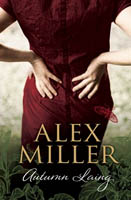 |
Autumn Laing Alex Miller Allen & Unwin 2011 |
Autumn Laing has long outlived the legendary circle of artists she cultivated in the 1930s. Now 'old and skeleton gaunt', she reflects on her tumultuous relationship with the abundantly talented Pat Donlon and the effect it had on her husband, on Pat's wife and the body of work which launched Pat's career. A brilliantly alive and insistently energetic story of love, loyalty and creativity.
Autumn Laing seduces Pat Donlon with her pearly thighs and her lust for life and art. In doing so she not only compromises the trusting love she has with her husband, Arthur, she also steals the future from Pat's young and beautiful wife, Edith, and their unborn child. Fifty-three years later, cantankerous, engaging, unrestrainable 85-year-old Autumn is shocked to find within herself a powerful need for redemption. As she begins to tell her story, she writes, 'They are all dead and I am old and skeleton-gaunt. This is where it began...'
Written with compassion and intelligence, this energetic, funny and wise novel peels back the layers of storytelling and asks what truth has to do with it. Autumn Laing is an unflinchingly intimate portrait of a woman and her time - she is unforgettable.
Reviews
Michael McGirr in "The Age": "At one level, this is a book about visual art, a passion that has sustained a good deal of Miller's fiction. Works such as The Sitters and Prochownik's Dream deal front and centre with the experience of art and the cost of its making. Miller may be a prolific author but nothing in his work ever feels rushed: every moment of significance is given due weight and reverence...Autumn Laing is more than just beautifully crafted. It is inhabited by characters whose reality challenges our own."
Morag Fraser in "The Australian Book Review": "The glory of the novel is that the explorations are so fully embodied in characters who are not just credible, but also smartingly alive. You can see them, smell their breath, argue with their opinions, taste their blood, stare down a wild boar with them, mourn their passing. Autumn herself is cranky, cruel, often vile-tongued - and given scope to be so, because in her various modes she is the novel's dictating voice. But there is always, in her, a whip crack of self deprecation, a down-to-earth ribaldry and switchback intelligence that rescues her from afflatus...All of Alex Miller's wisdom and experience - of art, of women and what drives them, of writing, of men and their ambitions - and every mirage and undulation of the Australian landscape are here, transmuted into rare and radiant fiction. An indispensable novel."
Patricia Maunder on ABC Radio National's "The Book Show": "At about 450 pages, it's surprising how little actually happens in Autumn Laing, and yet how captivating it is. Of course there's drama; it's about an adulterous affair in the art world after all, but this novel very much dwells in the inner world of creativity, emotion and wisdom...Alex Miller shows extraordinary technical skill in deftly switching between Autumn's past, presented as quite formal third-person narration; and present, told in intense, immediate first-person monologue. It's a remarkably effective structure, as it gives real weight to the story. The actions and emotions surrounding the affair are not fleeting and inconsequential, but reverberate across the decades, weighing the ailing but still feisty Autumn down. Her complex, often contrary feelings of bitterness, ardour, guilt and mirth become almost tangible, hardened and polished by time."
Janine Burke in "The Monthly": "Miller has fun with his cast of characters and humour, while black, ripples through the narrative, leavening Autumn's more corrosive judgements and insights. Miller engages so fully with his female characters that divisions between the sexes seem to melt away and all stand culpable, vulnerable, human on equal ground. Miller is also adept at taking abstract concepts - about art or society - and securing them in the convincing form of his complex, unpredictable characters and their vivid interior monologues."
Mark Robbo from Readings bookshops: "One of the initial temptations in embarking on this novel is to fit Miller's characters to the real life characters of Sunday and John Reed's world but it is to Miller's credit that this desire fades and it his characters that truly matter. Autumn Laing is Miller's most accomplished and ambitious novel to date."
Interviews
Mark Robbo from Readings bookshops.
Andrew Stephens in "The Age".
Fran Metcalf in "The Herald-Sun".
Neda Vanovac in "Meanjin".
Other
Alex Miller has written a short piece about how he came to write this novel. It has been published on "The Bennett Blog".
And he also writes about the novel on his own weblog.
You can read an extract from the novel that was published in The Australian newspaper in May 2011.
On "YouTube" you can watch the author reading from his novel, and discussing the work at Shearer's Bookshop in Sydney.
THE EDITOR OF THE MORNING BULLETIN.
Sir,-There has been some talk in London about New South Welshmen wishing to change the name of their colony. If it be true Aurora -- Dawn, or Auroria -- Land of Dawn, might be offered as a suggestion for the renaming, just as Italy was called Hesperia, i.e., land of the evening star (Hesperus). New South Wales has then, at any rate, substantial claims to be considered the "Land of Dawn."
(1). It is the furthest east of the continental possessions of the Empire upon which the sun never sets.
(2). As the mother of all the Australian colonies, she is the Dawn-land of the Greater Britain in the Antipodes.
(3). In Australia, first of the continents of the world, there has been no war and no want. This may fairly be called the dawn of the Millennium -- the promise of a new epoch for the world, and in New South Wales as the oldest colony this new dawn of course began.
Douglas B. W. Sladen
First published in The Morning Bulletin (Rockhampton), 22 November 1887
[Thanks to the National Library of Australia's newspaper digitisation project for this piece.]
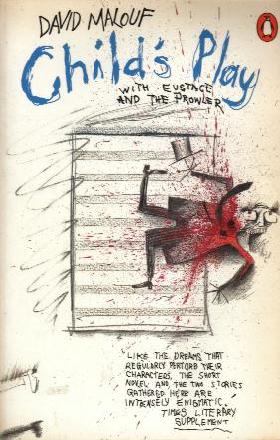
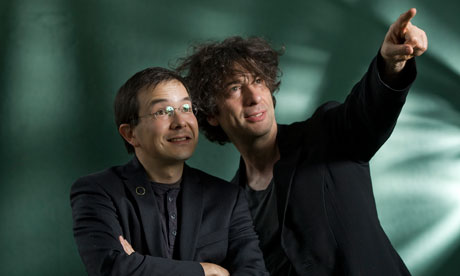 |
Neil Gaiman and Shaun Tan seem to be developing something of a double act these days, appearing on stage at literary events around the world. The two met last year at the Edinburgh book festival, and Gaiman recently wrote up their conversation for The Guardian newspaper. |
Neil Gaiman: Your stuff is always laconic. One of the things I love about it is that a picture is worth a thousand words and you make your pictures work very hard.
Shaun Tan: Part of it is that I don't trust myself as a writer. I still lack confidence, probably because the first 20 or so stories I wrote were roundly rejected. I actually started out as a writer and then converted to illustration because I realised that there was a dearth of good illustrators in genre fiction, at least in Australia at that time. I diverted all of my resources to visual imagery, and as a result I noticed that my writing did become more and more pared down, until it started to approximate my normal speaking patterns. When I write a story I imagine I'm telling it to someone like my brother. And we don't talk that much [laughs] - it condenses everything down and that's a very Australian thing, too.